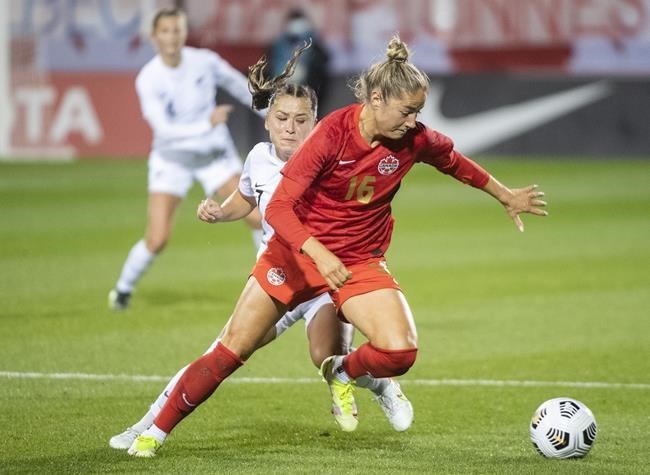A three-year study dubbed Project ACL launched Tuesday with the goal of reducing anterior cruciate ligament (ACL) knee injuries in women's soccer.
The project is a collaboration between FIFPro, England's Professional Footballers Association, Nike and Leeds Beckett University. FIFPro is the global union for professional football players representing some 65,000 players.
ACL injuries are two to six times more likely to occur in women than men and some two-thirds of ACL injuries occur in women’s football when there is no physical contact, according to research. And that number has not been reduced despite research and more professionalism in women's soccer.
But FIFPro says there is little understanding about how to reduce such injuries in professional women footballers, with most existing research and injury reduction programs focusing on amateur players.
"This is a response to the players rightly calling for more research," said Alex Culvin, FIFPro's head of strategy and research for women’s football and a former player herself. "Probably since COVID we've seen a number of high-profile ACL injury in professional women's football."
Canadian Janine Beckie, Australian Sam Kerr, Spain's Alexia Putellas and England's Beth Mead and Leah Williamson are among the international stars who have suffered recent ACL injuries.
Project ACL will work proactively with the 12 clubs and approximately 300 players in the FA Women’s Super League (FA WSL) "to better understand their current working environment, identify best practice and provide solutions to support the reduction of ACL injuries."
The study will include a review of existing research related to women's pro football, ACL injuries and existing injury-reduction program, assess FA WSL clubs' resources and access to facilities, and track the workload, travel and activity of FA WSL players.
FIFPro and the project partners will make findings of the study available to all football stakeholders including FIFA and regional confederations.
“Most of the research to date on ACL injury in women has focused on single sex-based risk factors like the mechanics of female bodies," said Stacey Emmonds, reader in sports performance at Leeds Beckett University. "The research in Project ACL will look at the bigger picture to consider the gendered environmental factors that may influence injury risk in women's professional football."
Fern Whelan, an executive with the Professional Footballers Association, suffered a knee injury while playing for Everton.
"So I know the hard-hitting impacts of ACL injuries and of knee injuries," she said. "We see it as a real player welfare issue at the PFA."
Emmonds says Leeds Beckett University has been involved in research around the women's game for more than five years.
"But I think what's really missing from the research at the moment is that holistic environment … A lot of the research continues to suggest and use language which suggests that a lot of the risk factors are actually inherent to female athlete when we know a lot of those are potentially modifiable given the environment that the players are in."
The hope is to "be able to explore how we can influence some of those risk factors," she added.
In March, a U.K. parliament report said a rise in anterior cruciate ligament injuries in women’s soccer highlights “systemic gender inequality in sports.”
The Women and Equalities Committee said there was a “lack of understanding of the health and physiological needs of women and girls across sport.”
In its report “Health Barriers for Girls and Women in Sport,” it cited a lack of footwear specifically designed for women's players as an area of concern and called on the government to assemble a task force to address the issue.
Asked about the boot issue, Culvin cited an analogy used by Emmonds that it's "a very small rock amongst larger rocks … The big rocks for us are the holistic risk factors.'"
They include workload, playing environments and other factors "that are really important but are under-reported because they don't have the really shiny elements of like somebody producing the first-ever women's-specific football boot," she added.
Emmonds said while there are "potentially some contributing factors regarding female physiology, we know that there are a lot more things that could be influences from the environmental factors," including access to certain facilities and expertise.
One example is girls receive less exposure to strength and conditioning than boys at a young age.
"The training environments are very different for boys and girls and that builds the foundation for good movement quality, athletic development and strength which underpin reducing some of the injury risks," said Emmonds.
The parliamentary committee said the response from the sports science sector had been “disparate and slow” and sports and exercise research was “overwhelmingly” conducted by men.
"We know that female athletes are under-represented generally across sport science and medical literature," Emmonds said. "Around six per cent of literature is only really focused on the female athlete."
---
Follow @NeilMDavidson on X platform, formerly known as Twitter
This report by The Canadian Press was first published April 30, 2024.
Neil Davidson, The Canadian Press




